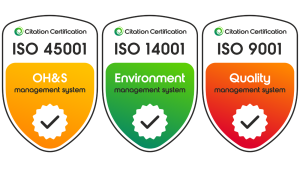Mobile Phones Distracted Driving 2023 by Kurt Speirs
Mobile Phones Behind the Wheel
The ongoing debate surrounding working from home dominates headlines and social conversation, with flexible working in a post-Covid economy heralded as both the answer to and the cause of problems of modernity. However, for many workers, presence on a job site, at the office or a mixture of the two, remains essential. As work has become more flexible, we find ourselves frequently commuting with our minds preoccupied with our next tasks. Often within reach is our most common distraction and our most familiar work tool – our mobile phones.
Mobile phones have seamlessly woven into the fabric of our lives, but their irresponsible use poses a significant threat to road safety. Acknowledging this issue, the NSW government has implemented mobile phone detection cameras. These advanced cameras employ cutting-edge AI technology to identify drivers engaging in illegal mobile phone use, ensuring penalties are enforced. When a violation is detected, the cameras capture images that undergo review by human operators. Offenders then receive an infringement notice, incurring fines and demerit points on their driving records.
The road fatality stats in Australia, with an alarming number recorded within NSW, serve a sobering reminder of the devastating impact of road incidents, underscoring the urgent need to address distractions, particularly mobile phone use, in order to mitigate risks on the roads.
Although a mobile phone on a mount/digital display is a legal way for a driver to use maps or make/take phone calls, it is essential to consider whether these alternatives are entirely risk-free. Employers can play a vital role in promoting responsible driving practices among their workforces. Policies and guidelines regarding mobile phone use while driving are a crucial start. More importantly, the culture set by employers can emphasise the importance of safe and focused driving behaviours. The discussion between workers and employers about what conversations are appropriate in the car is paramount. Although perfectly legal, most people would find the idea of someone navigating their child’s school zone while on a call in peak hour discomforting. It contrasts with a casual call to a colleague, client or supplier in lighter mid-day traffic.
The risks of distracted driving extend beyond work and impact our day to day lives and those of our communities. By working together, employers and workers can create a culture that values safe driving and minimises distractions, leading to a future with fewer on road incidents and enhanced road safety. Ultimately, our work is interconnected with our community, and everyone deserves to return home safely.
Written by Red Insight’s HSEQ Consultant Kurt Speirs

